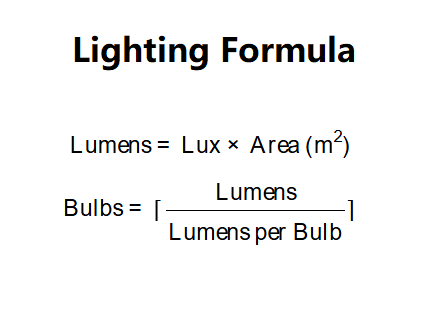 Home
Home
 Back
Back

Definition: This calculator determines the total lumens required to light a room based on its dimensions and desired illuminance level (lux), and optionally calculates the number of bulbs needed based on bulb output.
Purpose: It helps in planning lighting for homes, offices, or workshops by ensuring adequate illumination for different activities or room types.
Lighting requirements are calculated using:
Steps:
Details: Proper lighting enhances comfort, productivity, and safety. This calculator helps match illumination levels to room use (e.g., bright for workshops, dim for TV viewing) and ensures energy-efficient bulb selection.
Tips: Select the room type/illuminance level, enter room dimensions with units, and optionally provide bulb output in lumens. Results show area and lumens required, plus bulbs needed if bulb data is entered.
Examples:
Q: What is lux?
A: Lux is a unit of illuminance, measuring lumens per square meter (lm/m²).
Q: What are lumens?
A: Lumens measure total light output from a source.
Q: Why round up bulb count?
A: To ensure sufficient lighting, as partial bulbs aren't practical.